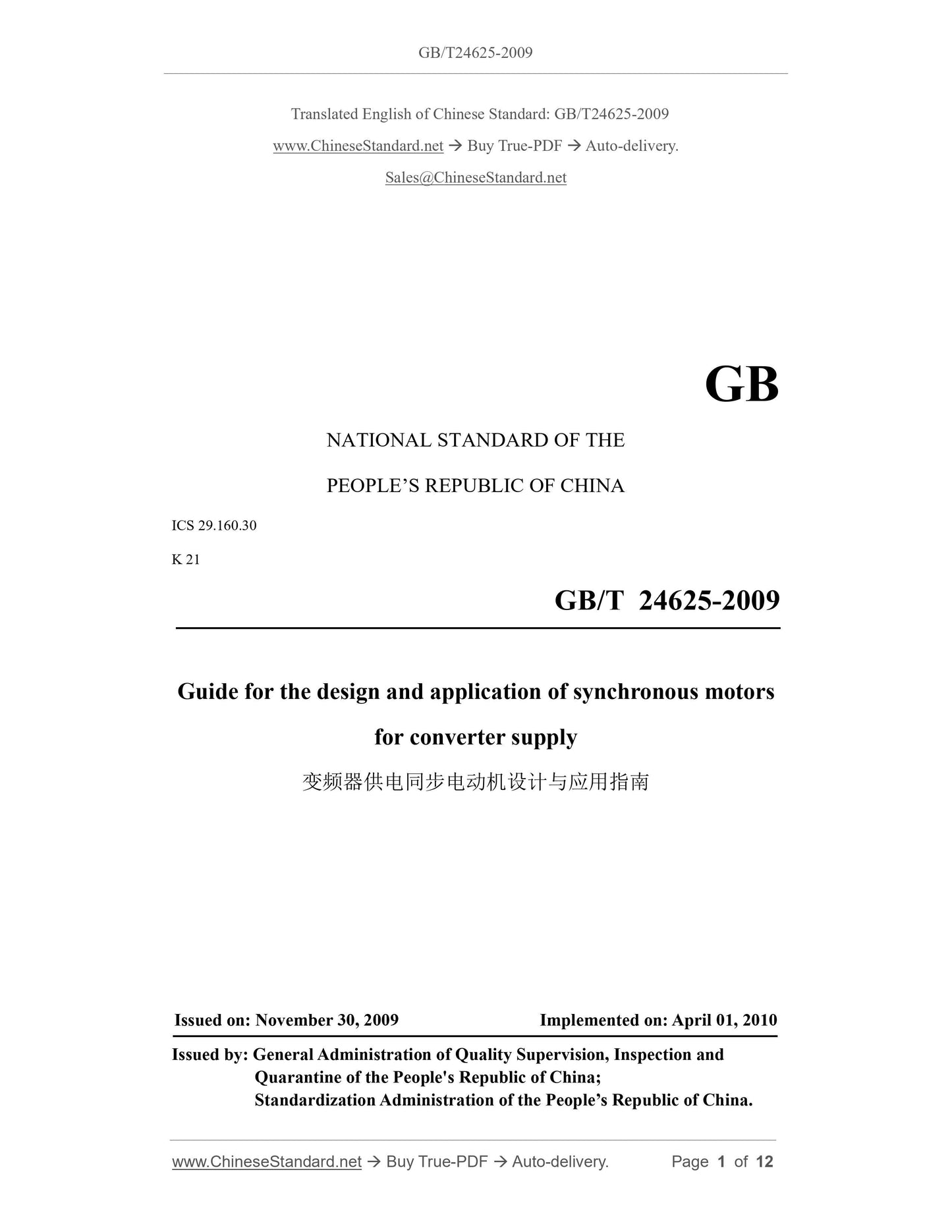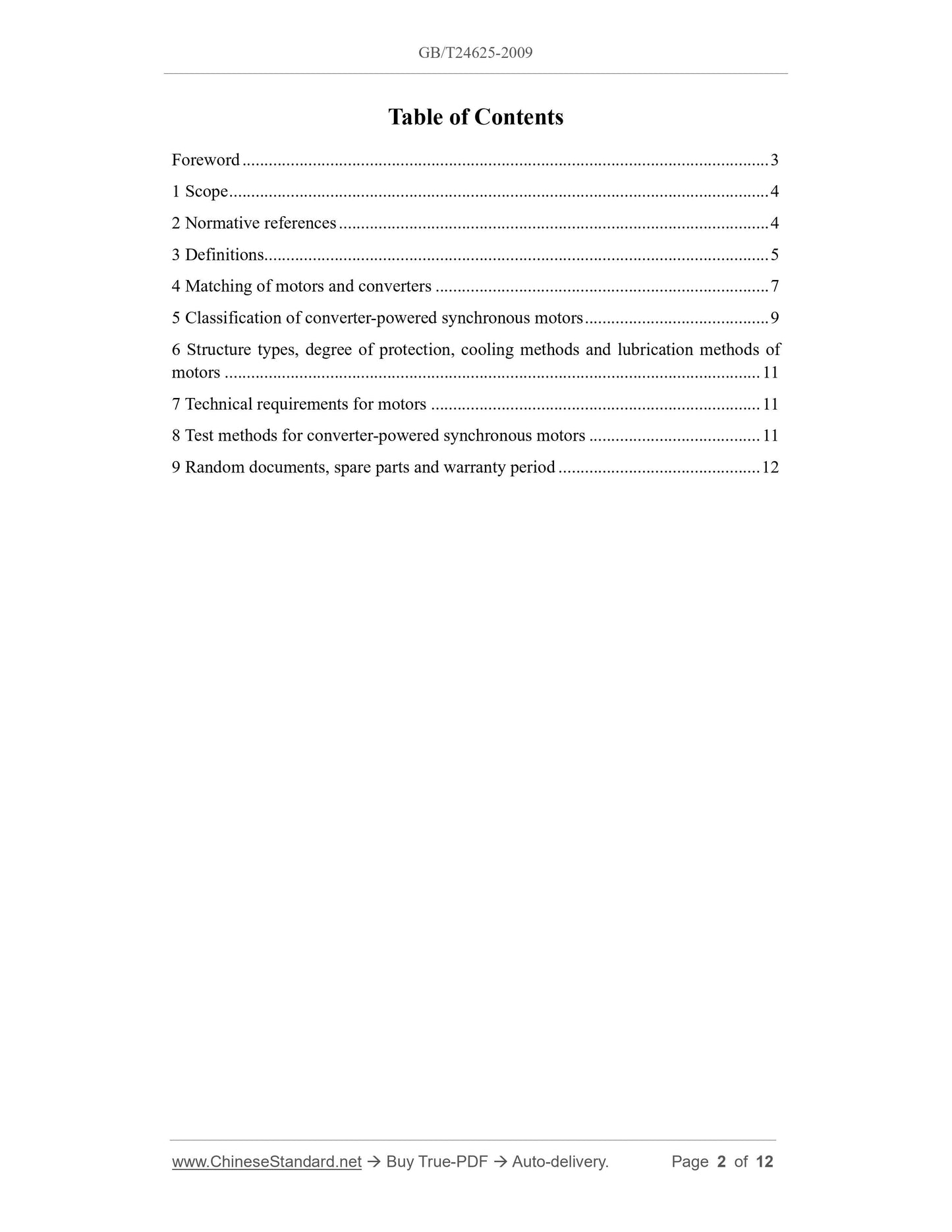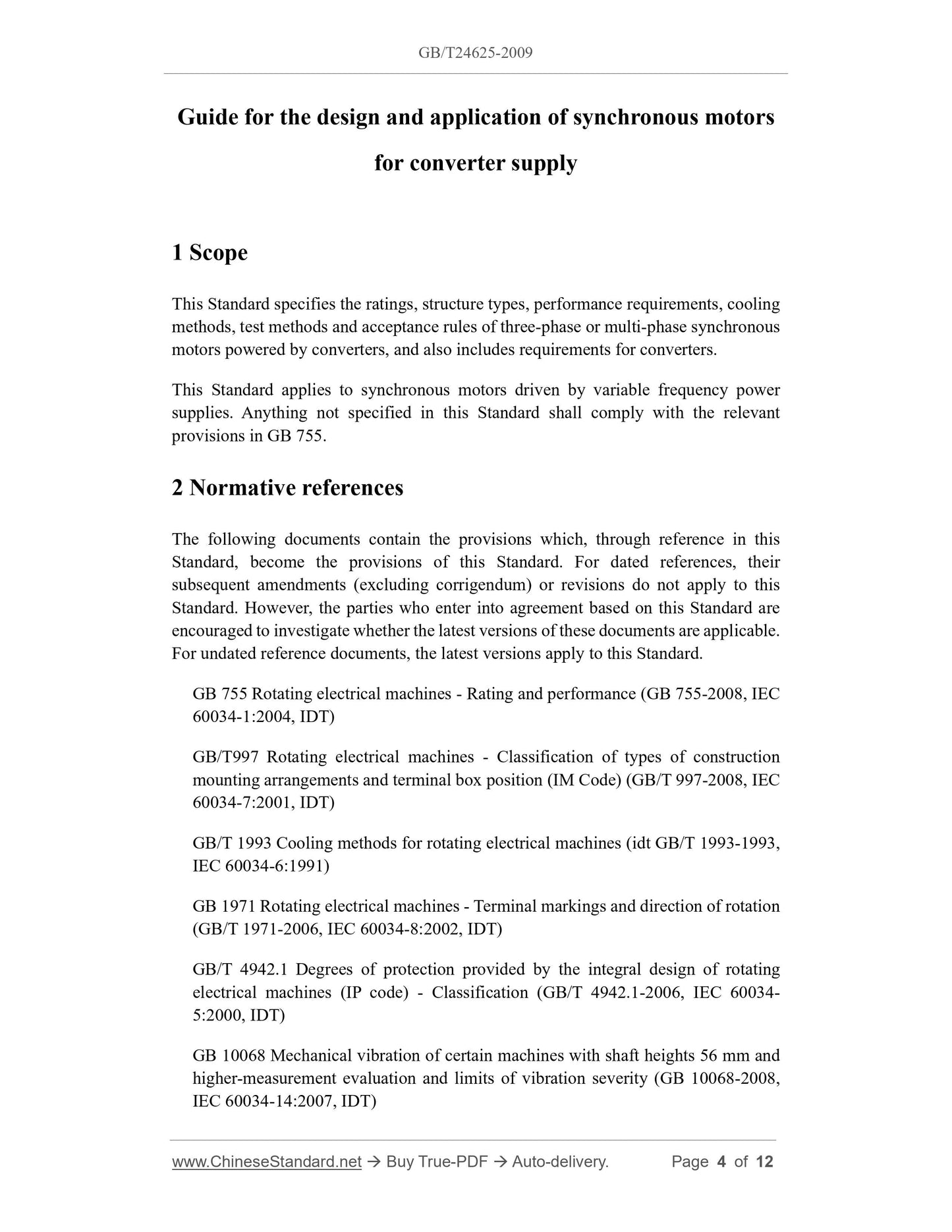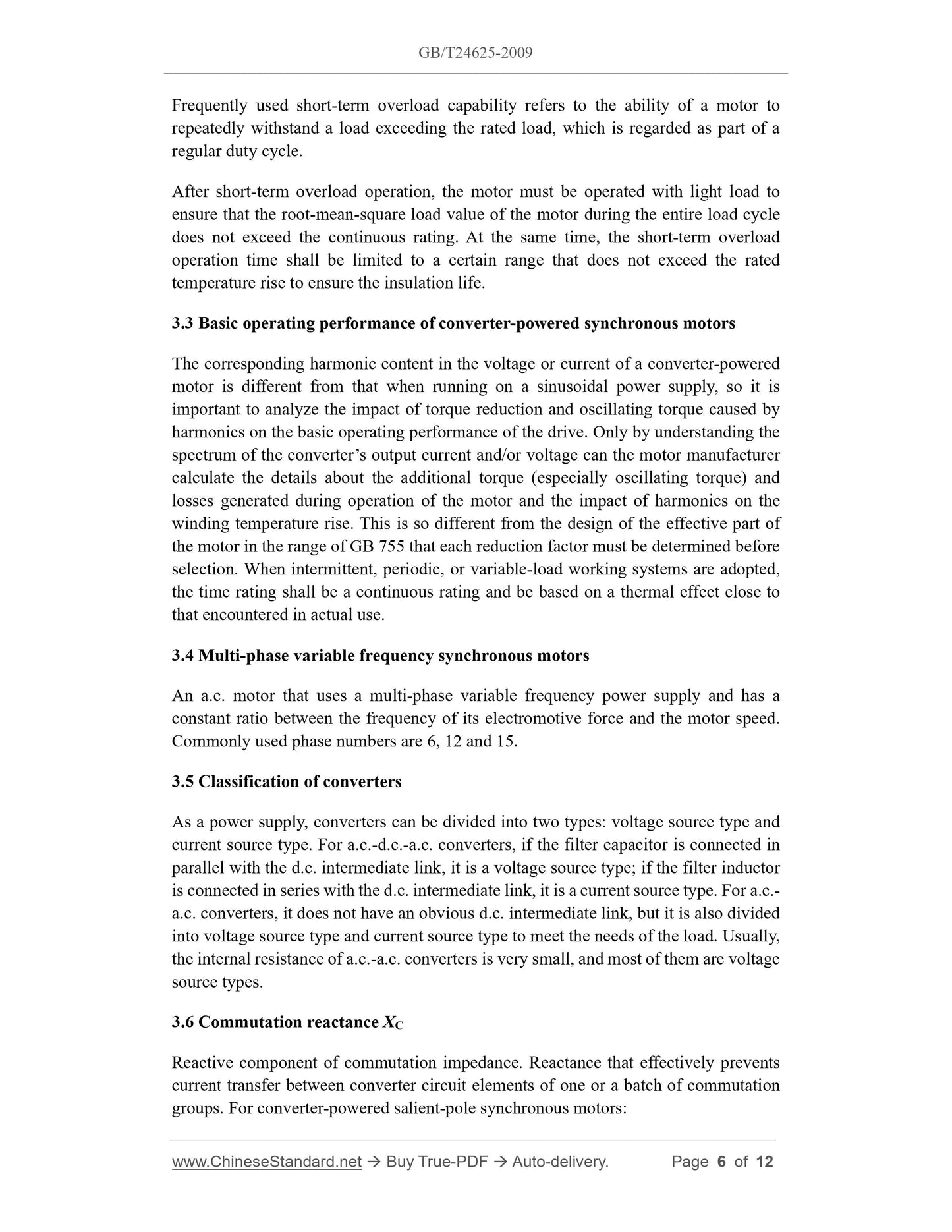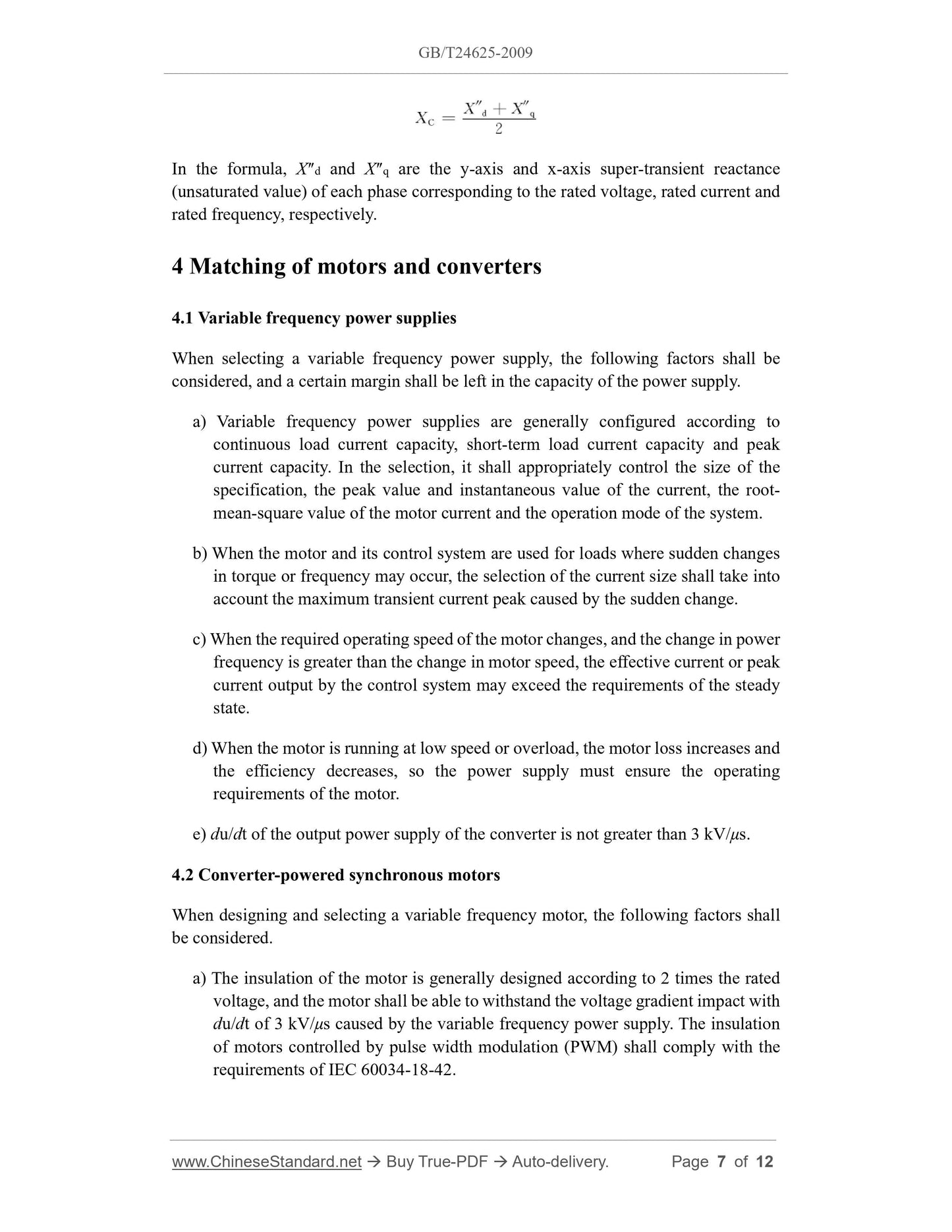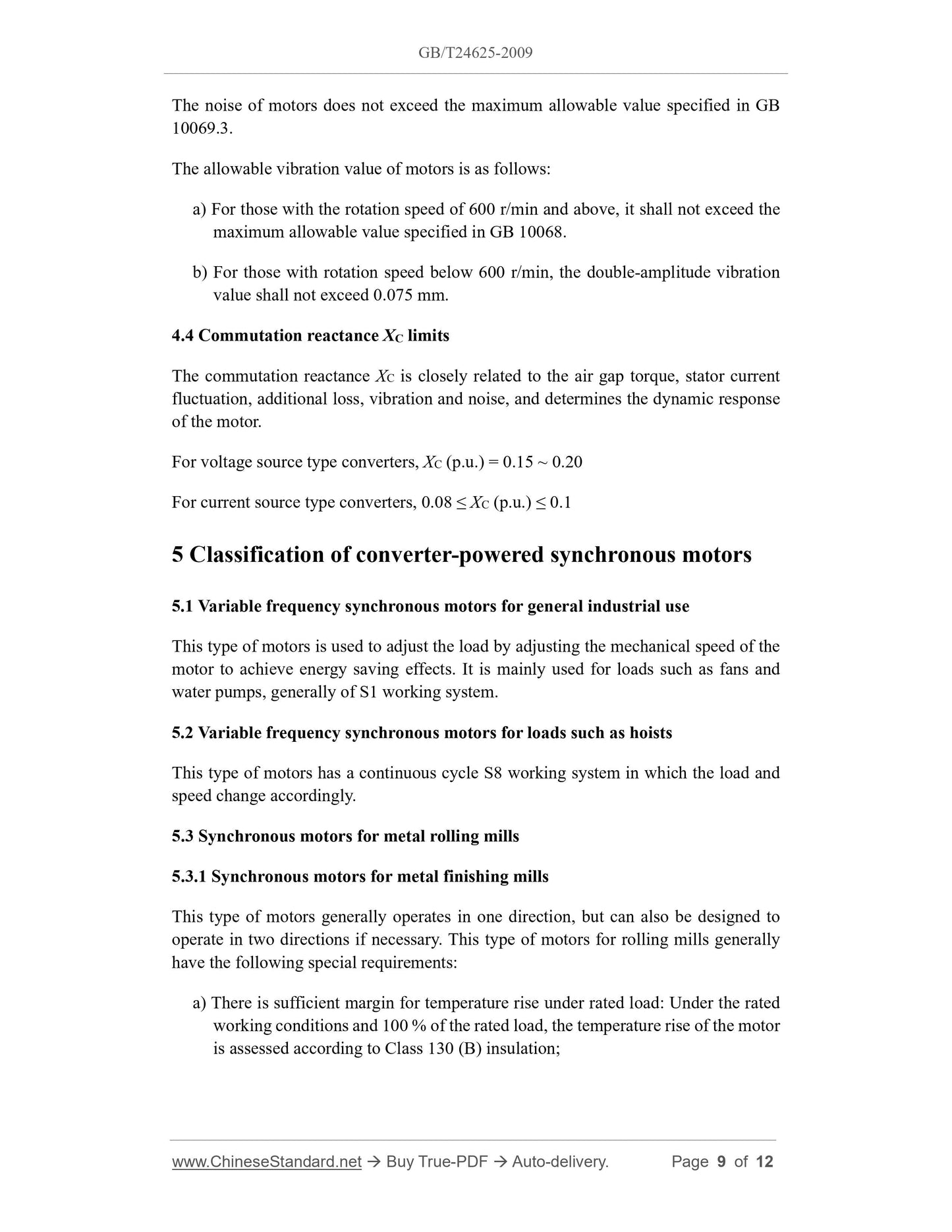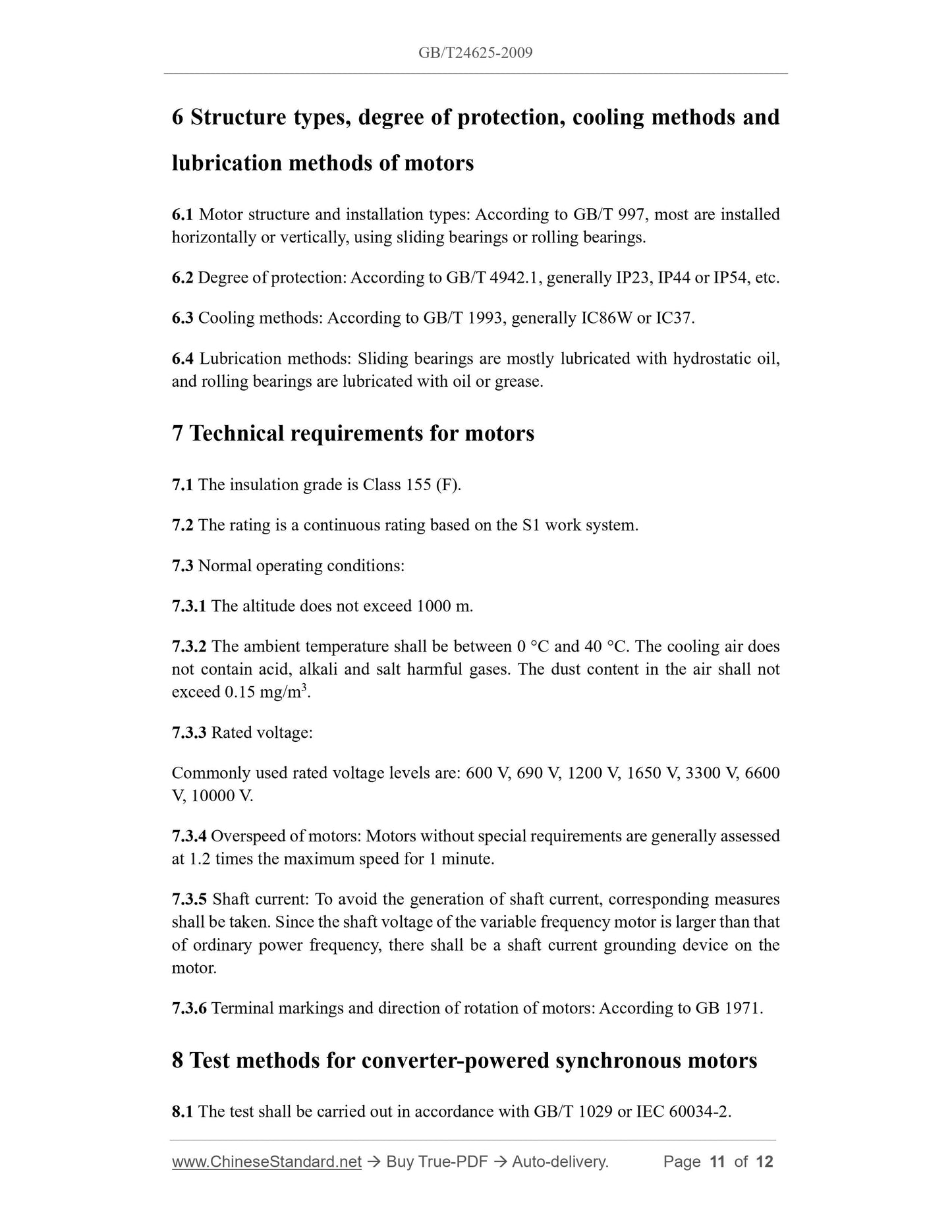1
/
of
7
www.ChineseStandard.us -- Field Test Asia Pte. Ltd.
GB/T 24625-2009 English PDF (GB/T24625-2009)
GB/T 24625-2009 English PDF (GB/T24625-2009)
Regular price
$195.00
Regular price
Sale price
$195.00
Unit price
/
per
Shipping calculated at checkout.
Couldn't load pickup availability
GB/T 24625-2009: Guide for the design and application of synchronous motors for converter supply
Delivery: 9 seconds. Download (and Email) true-PDF + Invoice.Get Quotation: Click GB/T 24625-2009 (Self-service in 1-minute)
Newer / historical versions: GB/T 24625-2009
Preview True-PDF
Scope
This Standard specifies the ratings, structure types, performance requirements, coolingmethods, test methods and acceptance rules of three-phase or multi-phase synchronous
motors powered by converters, and also includes requirements for converters.
This Standard applies to synchronous motors driven by variable frequency power
supplies. Anything not specified in this Standard shall comply with the relevant
provisions in GB 755.
Basic Data
| Standard ID | GB/T 24625-2009 (GB/T24625-2009) |
| Description (Translated English) | Guide for the design and application of synchronous motors for converter supply |
| Sector / Industry | National Standard (Recommended) |
| Classification of Chinese Standard | K21 |
| Classification of International Standard | 29.160.30 |
| Word Count Estimation | 9,991 |
| Date of Issue | 2009-11-30 |
| Date of Implementation | 2010-04-01 |
| Quoted Standard | GB 755; GB/T 997; GB/T 1993; GB 1971; GB/T 4942.1; GB 10068; GB 10069.3; GB/T 1029; IEC 60034-2; IEC 60034-18-42 |
| Regulation (derived from) | Announcement of Newly Approved National Standards No. 13 of 2009 (No. 153 overall) |
| Issuing agency(ies) | General Administration of Quality Supervision, Inspection and Quarantine of the People's Republic of China, Standardization Administration of the People's Republic of China |
| Summary | This standard specifies the three-phase or multi-phase inverter power supply synchronous motor scale, structure type, performance requirements, cooling method, test methods and acceptance criteria, and contains the inverter requirements. This standard applies to power inverter -driven synchronous electric cars. This standard does not specify who should comply with the relevant provisions of GB 755. |
Share
